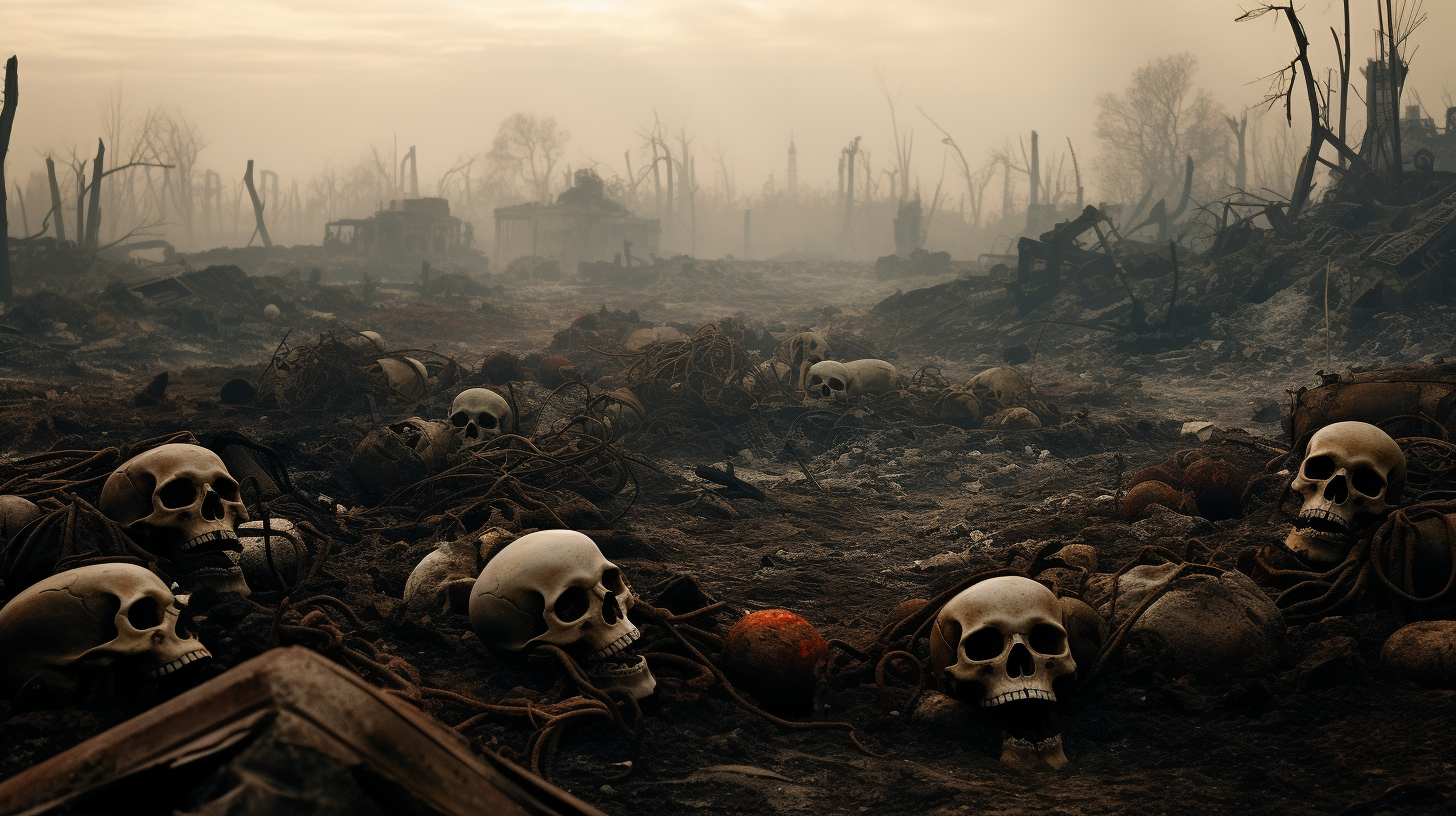In a world unrecognizable to our ancestors, where the egregious harm to our planet’s ecosystem could no longer be swathed under the banner of progress, stands humanity—wan and wearied, eternally seeking nourishment from the frayed tapestry of life. After the Last Harvest is not merely a statement of temporal finality but a saga of an ongoing scavenge hunt in the remnants of a once-plentiful Earth.
‘After the Last Harvest: Humanity’s Quest for Sustenance,’ weaves into its narrative the stark realization that our once bountiful granaries are now empty. The picture is dire, quintessentially dystopian in that the barren fields stretch far-reaching into the horizon, a testament to the missteps of a bygone era of extravagance. It is here, in this unforgiving tableau, where humanity’s ingenuity and desperation dance a tremulous waltz—striving to coax life from seeds upon the precipices of skyscrapers or in the depths of artificial caverns.
Their efforts, although audacious and steeped in avant-garde technological marvels—speak of silent farmsteads and echos of traditional agriculture that have slipped into the void. Remember the ‘Last Harvest Moon’? Such celestial events now haunt our collective memory with the yearning for a past when the moonlight caressed thriving crops rather than illuminating the barrenness—a harsh reflection of the cost of ignoring the ever-present climate warnings.
As reported in ‘Beyond Rooftops: The High-Rise Farms Feeding the Future,’ the patchwork of vertical farms is a visceral symbol of our adaptability. But it stands on the shaky grounds of sustainability, often succumbing to the weight of hyperlocal isolation. The self-sustained agriculture paradigms within these towers narrate a tale of mankind’s obstinate will to persevere. Here, we trade open skies for bioluminescent lumens, soil for hydroponic streams, seasons for climate-controlled environments, indulging in the illusion of control.
Yet, we find ourselves at an impasse, asking if these efforts, these grand attempts at reinventing growth and sustenance, are but a fruitless endeavor. Isolation begets more than just physical barriers; it compounds the cognitive dissonance between our desire for communal prosperity and the stark reality of an individualistic fight for survival. Our cultural lexicon has evolved—or devolved—reflecting this new world, with terms like ‘caloric currency‘ and ‘dietary salvagers‘ emerging as collective identities.
Despite the overwhelming dominion of the green dystopia we reside in—a world where the famine of action surmounted the famine of food—the story of humanity is incomplete without the whispers of resilience. Humans, albeit faltering, continue to adapt, innovate, and most importantly, cultivate hope amidst hopelessness.
Grandmother’s recipes now carry more than just the vestiges of a bygone gastronomical affluence, they serve as blueprints for improvised concoctions that are passed down not just through familial lines but in clandestine networks, akin to the lore of old. Each morsel, an artifact; each sip, a concoction of the past whispered into the desperate present.
The narrative spun within these paragraphs is one of paradoxical tones, where the somber chords of desolation interlace with the subtler hues of ingenuity, forming an indelible mark on the conscience of those persistent enough to discern it. And amidst the bleak visage of our present-day dystopia, emerges a question that is not aimed outward but rather burrows deep into the soul of our civilization—‘What legacy do we leave in our quest for mere survival?’
It remains a testament of our time, that while the last harvest has come to pass, the human spirit still sows seeds of persistence, however uncertain the yield. For as long as breath finds sanctuary within our lungs, the quest for sustenance endures, both a curse and testament to our unyielding resolve.
